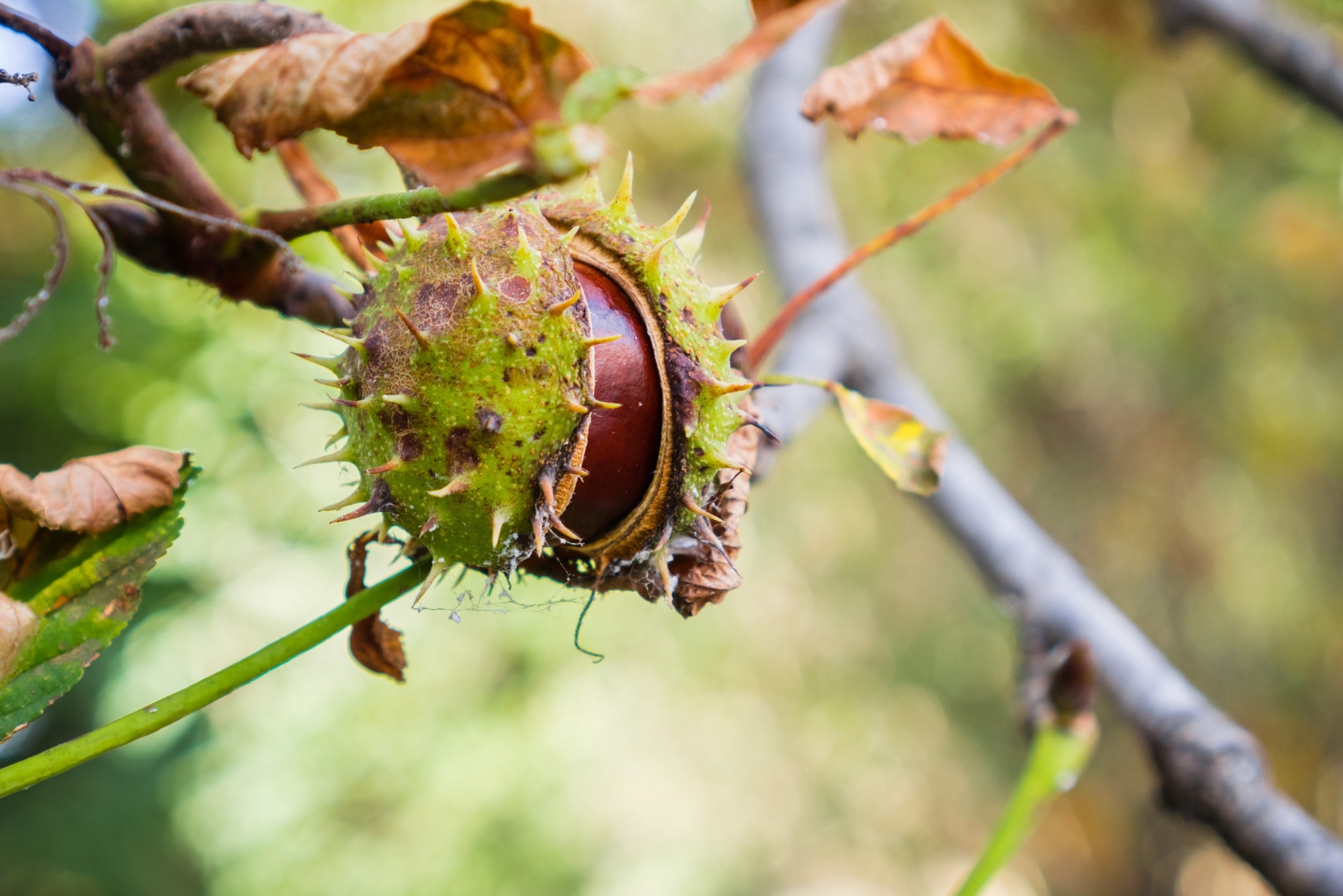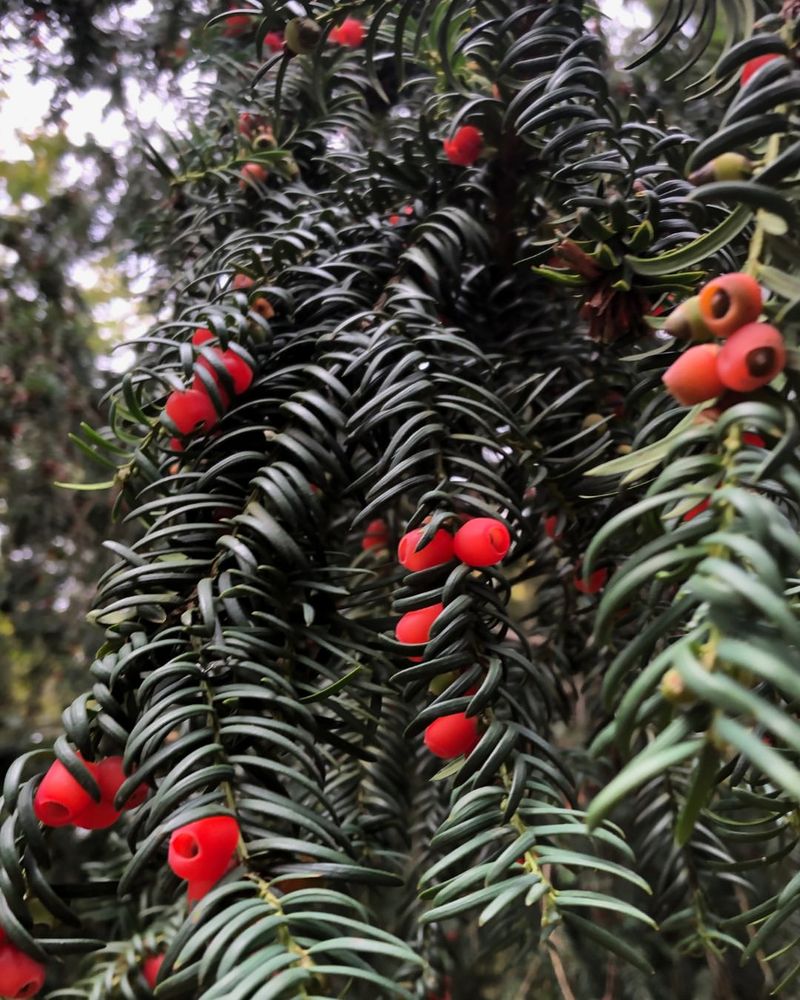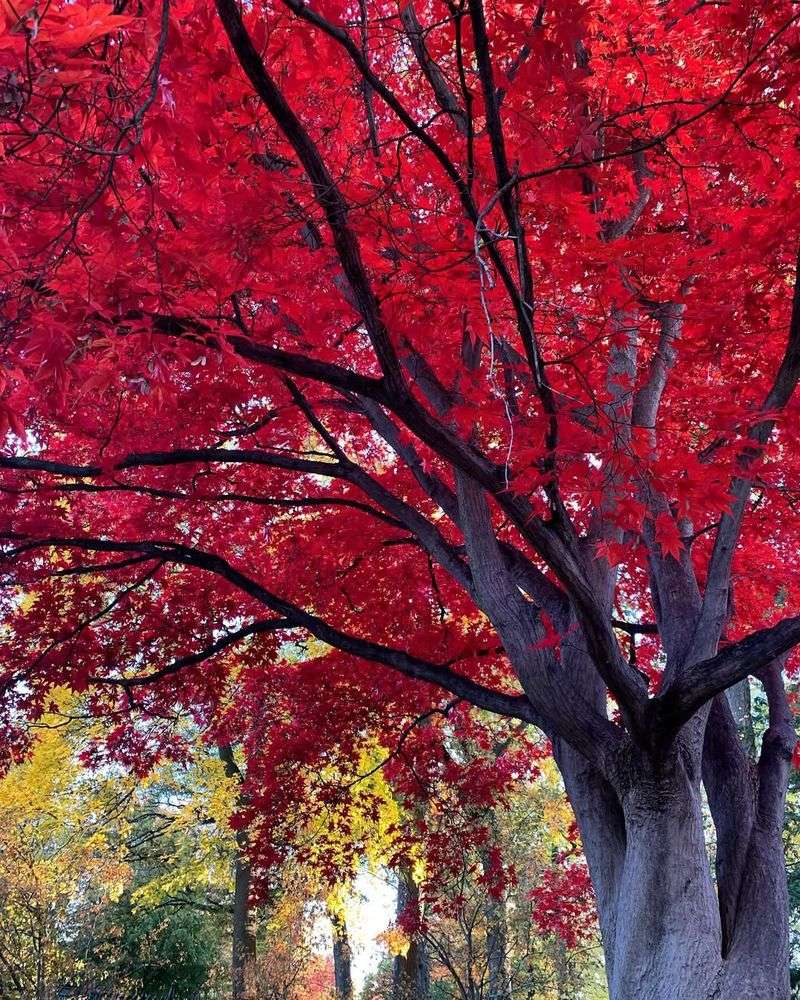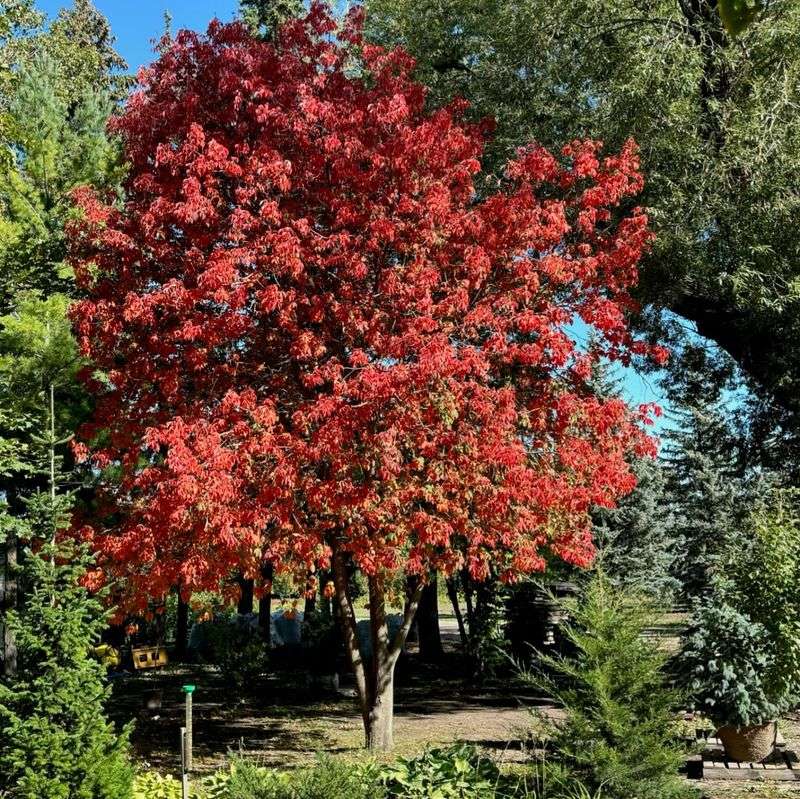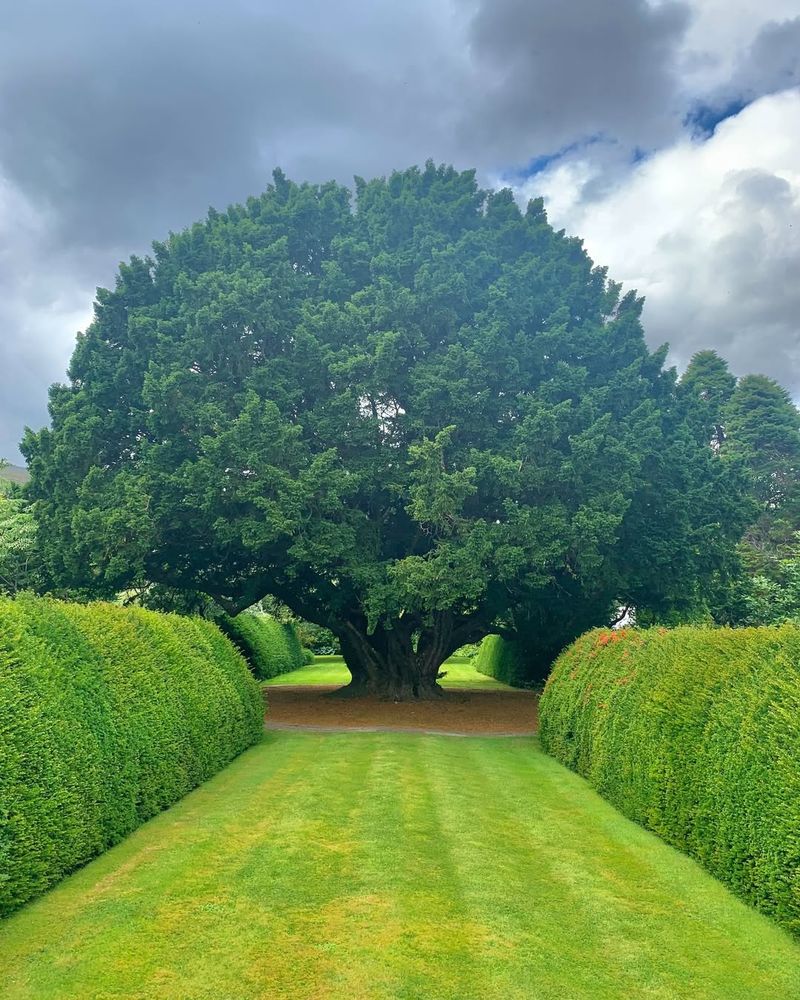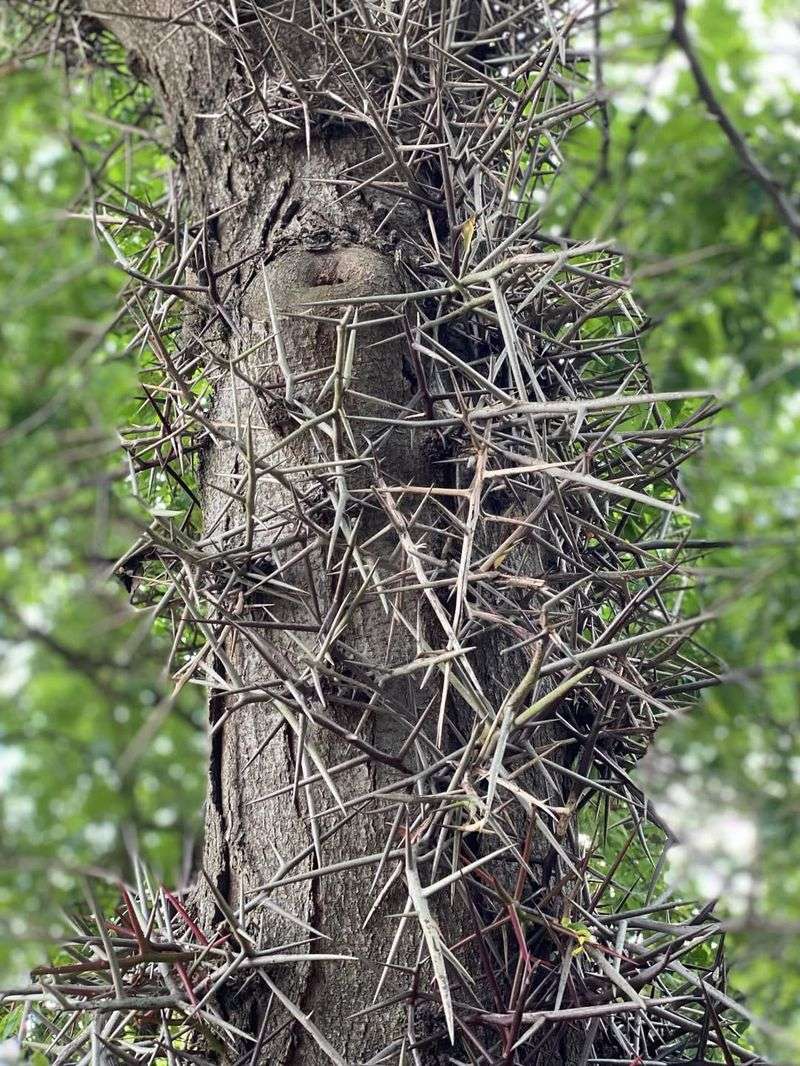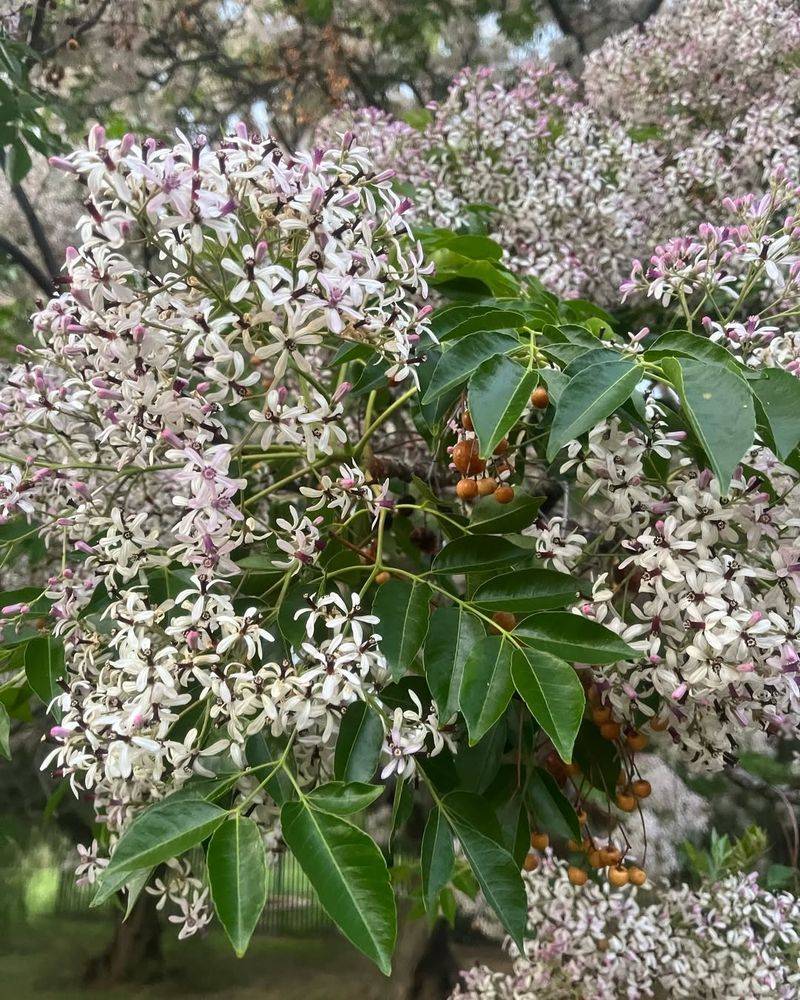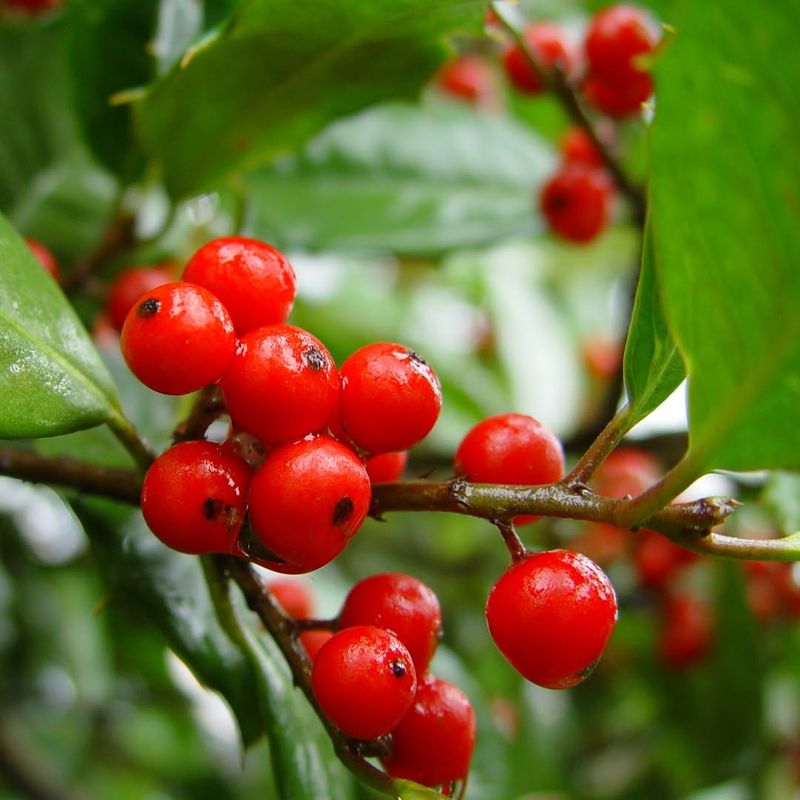Michigan gardens can hide some sneaky trees that create problems you don’t expect. I brushed past one years ago and couldn’t believe how irritating it was afterward.
These varieties bring more risks than benefits once they mature. Your yard feels a lot safer once you know which trees to skip.
1. Black Walnut
Black walnut trees produce a chemical called juglone that can poison other plants growing nearby. Many Michigan homeowners don’t realize this tree’s roots release toxins into the soil, killing tomatoes, azaleas, and other sensitive plants.
The nuts themselves can also cause stomach problems for dogs and horses if eaten. Keep pets away from fallen nuts, especially the moldy ones.
While beautiful and valuable for lumber, black walnuts require careful placement in your yard to avoid damaging your garden.
2. Yew Trees
Every part of the yew tree contains dangerous toxins except the fleshy red covering around its seeds. Across Michigan, these evergreens are popular for landscaping, but they’re extremely poisonous to humans and animals.
Just a few needles can cause serious heart problems if swallowed. Children are especially at risk because the red berries look tempting to eat.
If you have yews in your yard, teach kids never to touch them and consider replacing them with safer alternatives.
3. Red Maple
Red maples are gorgeous additions to Michigan landscapes, especially during fall when their leaves turn brilliant crimson. However, their wilted or dried leaves are highly toxic to horses, causing severe anemia and kidney failure.
Surprisingly, fresh green leaves don’t cause the same problems. The toxins concentrate as leaves age and fall.
Horse owners should never allow their animals near red maple leaves, particularly during autumn cleanup season when leaves pile up around Michigan properties.
4. Buckeye Trees
Buckeye trees produce shiny brown nuts that look like they’d be fun to collect, but they contain dangerous toxins affecting the nervous system. Kids in Michigan sometimes mistake these attractive seeds for edible chestnuts, which is a serious concern.
All parts of the buckeye tree are poisonous, including leaves, bark, and especially the nuts. Symptoms include vomiting, diarrhea, and muscle weakness.
Teach children to leave buckeye nuts alone and supervise them during outdoor play near these trees.
5. Black Locust
With its fragrant white flowers and attractive appearance, black locust seems harmless in Michigan yards. Yet the bark, leaves, and seeds all contain toxins that cause nausea and weakness if ingested.
Children sometimes peel the bark or chew on seedpods, which leads to poisoning. Livestock also suffer when they nibble on fallen branches.
Despite its toxicity, black locust wood is rot-resistant and valuable. Just maintain careful supervision around the tree and clean up fallen debris promptly.
6. Elderberry
Elderberries are famous for making delicious jams and syrups across Michigan, but only when properly prepared. Raw berries, leaves, stems, and roots contain cyanide-producing compounds that cause severe stomach upset.
Unripe green berries are especially dangerous and should never be eaten. Cooking destroys the toxins, making ripe berries safe.
Many Michigan residents harvest elderberries, but it’s crucial to know proper preparation methods. Never let children eat raw berries straight from the tree, no matter how tempting they look.
7. Horse Chestnut
Horse chestnuts look remarkably similar to edible sweet chestnuts, but they’re completely different species. Throughout Michigan, these ornamental trees produce poisonous nuts that cause vomiting and paralysis if eaten.
The confusion between horse chestnuts and edible chestnuts has led to many poisoning cases. All parts of the tree contain toxic saponins.
Make sure your family knows the difference between these look-alikes. Horse chestnuts have spiky husks, while edible chestnuts have fuzzy ones with more numerous spines.
8. English Yew
English yew is even more toxic than its American cousin, yet it remains popular in Michigan landscaping for hedges and topiaries. Ancient wisdom called it the tree of death, and for good reason.
A single mouthful of needles can kill a person or pet within hours. The poison acts so quickly that animals often die before showing symptoms.
Consider removing English yews if you have small children or pets. Many safer evergreen alternatives exist for Michigan gardens without the deadly risk.
9. Kentucky Coffee Tree
Kentucky coffee trees grow well in Michigan and have interesting history as a coffee substitute during pioneer times. However, the raw seeds and pods contain toxic alkaloids that cause serious illness.
Roasting destroys the toxins, which is why early settlers could safely use them. Raw seeds cause vomiting, diarrhea, and neurological symptoms.
These trees drop large pods that kids might play with or pets might chew. Clean up fallen pods regularly and educate your family about the dangers of eating any part raw.
10. Mountain Ash
Mountain ash trees produce stunning orange-red berries that brighten Michigan yards during fall and winter. Birds love these berries, but they can cause stomach upset in humans, especially when eaten raw.
The berries contain parasorbic acid, which causes nausea, vomiting, and kidney irritation. Cooking converts this to harmless sorbic acid.
While not deadly poisonous, mountain ash berries are unpleasant enough to avoid. Keep young children from eating the attractive berries, and explain that what’s safe for birds isn’t always safe for people.
11. Honey Locust
Honey locust trees have wicked thorns that can grow several inches long, creating physical hazards in Michigan yards. While the pods themselves are less toxic than black locust, they can still cause digestive upset.
The real danger comes from those massive thorns that can puncture tires, injure people, and harm pets. Some varieties are thornless, making them safer choices.
If you have a thorny honey locust, consider removing low branches or replacing the tree entirely. The thorns pose greater immediate danger than the mild toxicity.
12. Chinaberry Tree
Chinaberry trees occasionally appear in southern Michigan, though they’re not native to the region. Every part of this tree is poisonous, with the berries being especially dangerous to children and pets.
Just a handful of berries can cause serious symptoms including vomiting, diarrhea, and breathing difficulties. The toxins affect the nervous system.
These trees spread aggressively and are considered invasive in many areas. Michigan homeowners should remove chinaberry trees both for safety reasons and to protect native plant communities from this aggressive spreader.
13. American Holly
American holly brightens Michigan winters with its glossy leaves and cheerful red berries, but those berries are mildly toxic. Eating just a few causes vomiting and diarrhea, though serious poisoning is rare.
Children are attracted to the bright red berries, especially during holiday decorating season. The spiky leaves also pose a physical hazard.
Holly is beautiful for landscaping but requires supervision around young children. Teach kids that these festive berries are for looking at, not tasting, despite their candy-like appearance during winter months.

